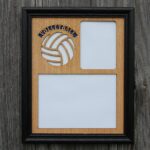I. Introduction to Upcycled Greenhouses
II. Materials and Tools Needed for Your Upcycled Greenhouse
III. Step-by-Step Guide to Building Your Upcycled Greenhouse
Introduction to Upcycled Greenhouses
Have you ever dreamed of nurturing a lush garden, filled with vibrant flowers and fresh vegetables, all while doing your bit for the environment? Well, you’re in the right place! Upcycled greenhouses are a fabulous way to cultivate your green thumb, reduce waste, and embrace sustainable living—all while adding a unique touch to your backyard.
What is an Upcycled Greenhouse?
Simply put, an upcycled greenhouse is a structure built using repurposed materials that might otherwise end up in a landfill. Think old windows, wooden pallets, or discarded plastic bottles. Not only does this creative approach help you save costs, but it also allows you to craft a one-of-a-kind space for your plants to thrive.
Why Choose an Upcycled Greenhouse?
There are numerous reasons to consider building an upcycled greenhouse:
- Environmental Impact: By using materials that have already served a purpose, you’re giving them a second life. This not only reduces waste but also minimizes the demand for new resources.
- Cost-Effective: Building a greenhouse from upcycled materials can save you a significant amount of money compared to purchasing brand new materials. Your wallet will thank you!
- Personalization: Each upcycled greenhouse can be tailored to your personal style. You can mix and match different materials to create a garden space that reflects your personality.
- Creativity and Fun: The process of building your greenhouse can be a fun and fulfilling project. You’ll get to flex your creative muscles and maybe even learn some new skills along the way.
Connecting with Nature
In today’s fast-paced world, we often lose touch with nature. Having an upcycled greenhouse gives you a dedicated space to reconnect with the earth. Whether you’re growing herbs for your kitchen, nurturing flowering plants, or embarking on a vegetable garden, tending to your plants can be a soothing and rewarding experience. Plus, there’s nothing quite like the joy of harvesting your homegrown produce!
Community and Sharing
Another delightful aspect of upcycled greenhouses is the sense of community they can foster. You may find inspiration from fellow garden enthusiasts, share tips, or even barter plants and produce. Who knows? You might discover a neighbor who shares your passion for all things green!
Final Thoughts
In a world where sustainability is becoming increasingly important, building an upcycled greenhouse is a beautiful way to contribute positively to the environment. It allows you to express your creativity, connect with nature, and enjoy the fruits of your labor (literally!). So, are you ready to roll up your sleeves and dive into this exciting project? Your future greenhouse awaits!
Materials and Tools Needed for Your Upcycled Greenhouse
So, you’ve decided to take the plunge into the world of upcycled greenhouses—fantastic choice! Not only are you being eco-friendly, but you’re also creating a charming space to nurture your plants. Before we get our hands dirty, let’s chat about the materials and tools you’ll need to bring your vision to life.
1. Materials
To kick things off, here’s a list of the primary materials you might consider using:
- Old Windows and Doors: These are the backbone of your greenhouse structure. Look for wooden or glass windows that you can repurpose. They come in various sizes and can create a beautiful, light-filled environment for your plants.
- Wood Pallets: Great for the base, pallets can be used for the floor or even as wall supports. They’re sturdy and readily available, often for free!
- Plastic Bottles: Don’t toss those bottles just yet! They can be used to create walls or even a unique roof. Plus, they’re excellent for insulation.
- Corrugated Metal or Plastic Sheets: They can serve as roofing materials, letting in light while still providing protection from the elements.
- Old Garden Furniture: Got some rusty chairs or tables? They can be reimagined as planters or shelving units inside your greenhouse.
2. Tools
Now that we’ve got the materials sorted, let’s grab the tools. Here’s what you’ll need:
- Drill: A must-have for making holes and securing components together. It’ll save you a lot of elbow grease!
- Saw: Whether it’s a hand saw or a power saw, you’ll need this to cut your windows, wood, or other materials to size.
- Measuring Tape: Precision is key! A good measuring tape will ensure everything fits together perfectly.
- Level: To make sure your structure is balanced and stable. Nobody wants a lopsided greenhouse!
- Hammer and Nails: Classic tools for securing your structure. A hammer is your best friend in this project!
- Safety Gear: Don’t forget gloves and goggles! Safety first, so you can enjoy your greenhouse-building experience without any hiccups.
3. Optional Extras
If you’re feeling a bit adventurous or want to add some flair, consider these optional materials and tools:
- Paint or Varnish: To give your greenhouse a personal touch, you might want to paint your wood or varnish metals. It can also add a layer of protection!
- Hinges and Latches: If you plan on having doors or windows that open, these will be essential for ease of access.
- Solar Panels: For the eco-conscious builder, adding solar panels can help power your greenhouse with renewable energy.
And there you have it! With these materials and tools at your disposal, you’re well on your way to creating a beautiful upcycled greenhouse. Remember, the most important component is your creativity—so let it shine as you build!
Step-by-Step Guide to Building Your Upcycled Greenhouse
Building your very own upcycled greenhouse can be a rewarding project that not only gives new life to old materials but also provides you with a beautiful space to grow your plants. Ready to dive in? Let’s get started with this friendly guide!
1. Choose Your Location
First things first: select the perfect spot for your greenhouse. You want a location that gets a good amount of sunlight—ideally, at least six hours a day. Avoid low-lying areas that might collect frost and water. Think about accessibility, too; you’ll want to easily reach it for watering and harvesting!
2. Gather Your Materials
Next, it’s time to gather your materials. Here’s a quick checklist:
- Old windows or glass doors
- Reclaimed wood pallets or unused wooden frames
- Plastic sheeting or old shower doors (for the roof)
- Hinges and screws
- Tools: saw, drill, measuring tape, level
- Optional: paint for aesthetics
Make sure to inspect what you have available and get creative! The beauty of upcycling is that you’re working with what you already have.
3. Design Your Greenhouse
Now, let’s get creative! Sketch out your design—this will help you visualize the space and how you want it to look. A simple A-frame or lean-to style can be easy to build and very effective. Think about how large you want your greenhouse to be, and keep in mind the dimensions of your materials.
4. Build the Frame
Once you have your design, it’s time to start building the frame. Use your reclaimed wood or pallets to create the structure. Make sure it’s sturdy! Tip: If you’re using windows, consider attaching them directly to the frame for easy access. Use a level to ensure everything is nice and even.
5. Add the Walls and Roof
Next up, it’s time to install the walls and roof. Here you can use your old windows or glass doors as panels. Secure them in place with hinges or screws. If you’re using plastic sheeting, make sure to stretch it tightly to avoid sagging. This will help with insulation and durability!
6. Create Ventilation
Don’t forget about ventilation! Your plants will need airflow to thrive. You can use leftover window frames as operable vents. Just attach them with hinges, and you can open them on hot days to keep things cool.
7. Finishing Touches
Once your structure is up, it’s time to add finishing touches. Consider painting the frame for a pop of color or adding shelves inside to organize your plants. And don’t forget to create a path leading to your greenhouse to keep your space tidy!
8. Stock Up with Plants!
Finally, the most fun part: filling your greenhouse with plants! Start with seeds or seedlings and let your gardening adventure begin. Enjoy watching your plants flourish in their new home.
And there you have it! Building an upcycled greenhouse can be a fun, creative, and eco-friendly project. So grab your tools, unleash your creativity, and let’s grow some green together!










Comments